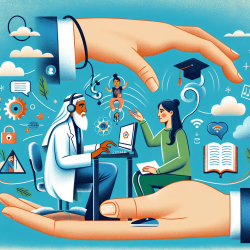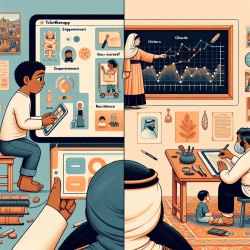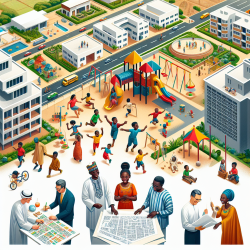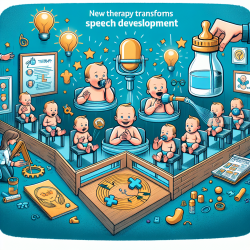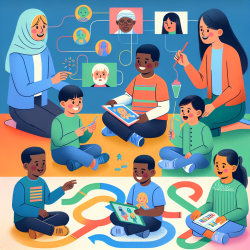Unlock the Secrets to Better Face Processing in Children with 22q11.2 Deletion Syndrome!
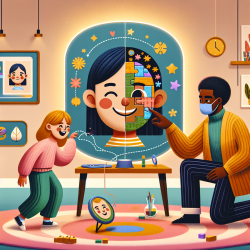
In the realm of speech-language pathology, especially when dealing with children, making data-driven decisions is crucial for creating the best outcomes. The study "Face processing in 22q11.2 deletion syndrome: atypical development and visual scanning alterations" offers profound insights into the challenges and developmental nuances associated with 22q11.2 deletion syndrome (22q11.2DS). Here, we explore how practitioners can harness these findings to enhance their therapeutic interventions.
Understanding 22q11.2 Deletion Syndrome
22q11.2DS, also known as DiGeorge or velocardiofacial syndrome, is a genetic disorder that often results in social and cognitive impairments. A critical aspect of these impairments is the difficulty in face processing, which is essential for social interactions and emotional recognition.
Key Findings from the Research
The study used eye-tracking technology to compare face processing in individuals with 22q11.2DS to typically developed (TD) individuals. Key findings include:
- Individuals with 22q11.2DS demonstrate an early bias toward the mouth region during initial fixations.
- They exhibit reduced flexibility in face exploration, characterized by fewer transitions between faces and longer fixations.
- There is no significant difference in visual scanpaths between configural face processing (CFP) and featural face processing (FFP) in the 22q11.2DS group.
- Longitudinal data indicates atypical development of CFP in individuals with 22q11.2DS.
Practical Applications for Practitioners
To leverage these insights, practitioners can implement several strategies:
- Target Early Fixations: Use visual cues to guide children to fixate on the eyes rather than the mouth. This can be achieved through explicit verbal instructions or implicit visual markers.
- Enhance Flexibility: Incorporate exercises that encourage dynamic and varied visual scanning. Activities that require children to identify differences between faces can promote flexible scanning patterns.
- Focus on Configural Processing: Develop tasks that emphasize the spatial relationships between facial features. This can help improve CFP, which is crucial for recognizing emotions and social cues.
- Monitor Progress Longitudinally: Regularly assess face processing skills over time to tailor interventions that evolve with the child's developmental trajectory.
Encouraging Further Research
While the study provides significant insights, further research is needed to fully understand the mechanisms underlying face processing difficulties in 22q11.2DS. Practitioners are encouraged to:
- Stay updated with the latest research to continuously refine therapeutic approaches.
- Collaborate with researchers to contribute to the growing body of knowledge on 22q11.2DS.
- Advocate for more longitudinal studies to track developmental changes and intervention outcomes.
To read the original research paper, please follow this link:
Face processing in 22q11.2 deletion syndrome: atypical development and visual scanning alterations.
Citation: Zaharia, A., Schneider, M., Glaser, B., Franchini, M., Menghetti, S., Schaer, M., Debbané, M., & Eliez, S. (2018). Face processing in 22q11.2 deletion syndrome: atypical development and visual scanning alterations. Journal of Neurodevelopmental Disorders, 10(1), 1-18. https://doi.org/10.1186/s11689-018-9245-x



